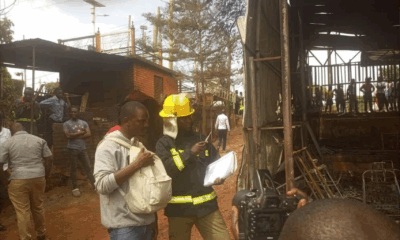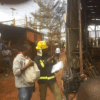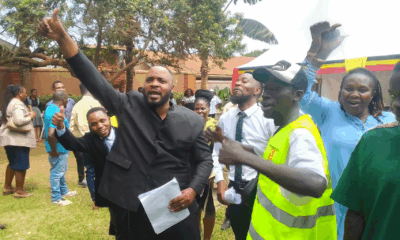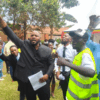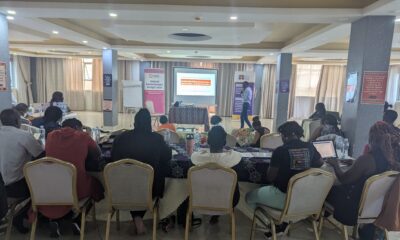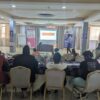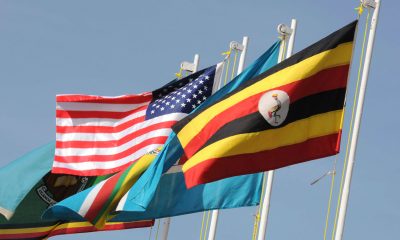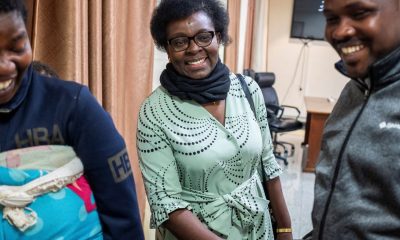News Feature
Solar power shows great potential to transform Uganda’s dairy sector
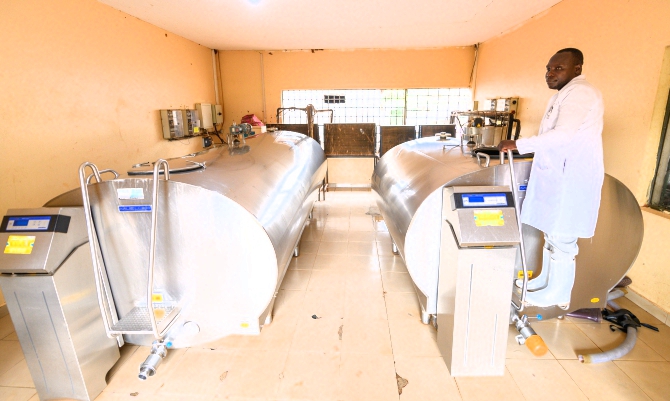
One of the solar-powered milk collection centres that has proved that renewable solar energy is a great choice for transforming the diary sector in Uganda
In Uganda’s rural areas, a transformative shift is reshaping dairy farming. Small holder farmers, previously reliant on costly and inconsistent diesel generators, are now benefiting from solar-powered Milk Collection Centres (MCCs). This transformation is driven by an innovation lease-purchase model from Heifer International, which enhances efficiency, reduces costs, and promotes environmentally sustainable energy solutions.
These solar MCCs not only improve milk collection but also set a new standard for sustainable agricultural practices across Uganda, empowering farmers and fostering economic growth in the region.
A Lifeline for Uganda’s Dairy Farmers
Milk Collection Centres (MCCs) are vital to Uganda’s dairy value chain, functioning as hubs where farmers within a 10-kilometer radius deliver milk for quality testing, chilling, and sale to dairy processors. These centres ensure a steady income for farmers while also offering access to essential services such as training, insurance, and agricultural inputs.
Yet, more than half of Uganda’s 483 MCCs operate off the national power grid, relying on diesel generators for their energy needs. This reliance drains up to 40% of operational budgets, severely limiting profitability and leading to frequent breakdowns that result in milk spoilage, ultimately resulting in financial losses for farmers and cooperatives alike.
The rising cost of energy has posed significant challenges for dairy farmers in Uganda. As William Matovu, Heifer International Uganda Country Director explains, “The rising cost of fuel has had a devastating impact on our dairy farmer cooperatives. With over 197 milk collection centres relying solely on diesel generators, operational costs have surged by over 50%. This has significantly eroded profit margins and forced farmers to sell lower-quality milk at reduced prices.”
Solar-Powered Solutions
To address these challenges, Heifer International, in partnership with Carbon Trust under the Powering Renewable Energy Opportunities (PREO) program, introduced solar energy as an alternative power source for Milk Collection Centres. The initiative involves a lease-purchase financing model, enabling cooperatives to acquire solar power systems with minimal upfront costs. The systems, which include solar panels, inverters and batteries, are supported by remote monitoring equipment and backed by robust maintenance and insurance packages, ensuring long-term reliability.
By harnessing the power of the sun, Heifer is empowering farmers and protecting the environment. As William Matovu explains, “Solar photovoltaic systems have reduced operational costs by 30% and carbon emissions by 90%. This not only benefits our farmers but also contributes to a more sustainable future.”

An aerial view of Migina (Dwaniro Dairy & Livestock Farmers Cooperative) in Kiboga District
The project was piloted at three MCCs in central Uganda, including Migina (Dwaniro Dairy & Livestock Farmers Cooperative) in Kiboga District, Kiryanyonza in Sembabule District, and Nabitanga in Rakai District. The results have been promising, with Migina MCC offering a striking example of the program’s impact.
Migina MCC: A Case Study in Transformation
The rising cost of energy has been a major challenge for dairy cooperatives in Uganda. However, Dwaniro Dairy Farmers Savings Cooperative has found a sustainable solution. Migina Milk Collection Centre, part of the Dwaniro Dairy and Livestock Farmers Cooperate, transitioned to solar power in mid-2023, and the benefits have been substantial:
Before adopting solar, Migina spent $36,450 (UGX 138 million) annually on diesel and generator maintenance. Since the switch, annual energy costs have fallen by 49% to $18,661 (UGX 70.7 million). Diesel consumption dropped by 93%, with solar power taking over as the primary energy source.
Consistent power supply eliminated milk losses, allowing the center to chill over 1.2 million liters of milk valued at $323,642 (UGX 1.2 billion) in just seven months. Previously, milk losses due to power outages averaged $2,653 (UGX 10 million) monthly.
Reliable energy has boosted farmers’ trust in the cooperative, leading to a 22% increase in membership. Milk collection rose from 536,215 liters to 541,206 liters within five months of the solar transition.
By cutting diesel use, Migina MCC reduced its carbon dioxide emissions by 62 tons annually, contributing to a cleaner environment.
By embracing solar power, the cooperative has significantly reduced operational costs and improved the livelihoods of its members. As Charles Ibona, General Manager of the cooperative, explains: “As Dwaniro Dairy Farmers Savings Cooperative, we had two generators worth 20KVC and 30KVC at the two-milk collection centre which used to consume a lot of fuel, and this would affect our profits. With solar, we spend about $26 (UGX 98,500) up from $92 (UGX 348,000) daily on power. We access and use clean power that is efficient and in turn, farmers are earning better from their milk sold to the cooperative because we reduced losses.”
Overcoming Challenges
Implementing the lease-purchase model wasn’t without hurdles. High initial costs, limited awareness of solar technology, and the complexity of aligning multiple stakeholders initially slowed progress. However, extensive consultations, flexible financing terms, such as a 10- to 20-year lease term with fixed quarterly payments and a one-year moratorium, and transparent collaboration helped mitigate these barriers.
The involvement of well-organised cooperatives was crucial. Groups like Dwaniro Cooperative provided a structured framework for scaling the project. Such structures attract partnerships and foster collective bargaining power, enabling smallholder farmers to access resources otherwise out of reach.
Scaling Up for the Future
Migina’s success demonstrated the financial and environmental viability of solar-powered MCCs. With payback periods of less than 3.5 years for self-financed installations, the model holds immense potential for replication across Uganda’s dairy sector.
SSID has enabled Heifer International to prove the concept of the productive use of solar energy at the dairy cooperative level. This success has attracted other development partners, such as ABI Development Ltd. And The Mott Foundation, who are already scaling up this work in Central and Southwestern Uganda. Furthermore, several installations are planned, including six in 2025 and eight between 2026 and 2027 at the cooperative level.
The resounding success of this pilot project suggests that the Government of Uganda and development partners must now prioritise scaling up such initiatives.
It further illustrates the fact that subsidies, tailored financing, and awareness campaigns are critical to increasing adoption across the dairy value chain.
Further more, the project has demonstrated that renewable energy technology is a key driver of value chain development. By adopting these technologies, smallholder farmers can enhance their livelihoods and foster socioeconomic transformation in their communities.
As Uganda grapples with the twin challenges of agricultural sustainability and climate change, Heifer International’s solar project offers a compelling blueprint for progress – one that promises brighter days for the nation’s dairy farmers.
Comments





